Coca-Cola. Harley-Davidson. Nike. Budweiser. Valued by customers more for what they symbolize than for what they do, products like these are more than brands–they are cultural icons. How do managers create brands that resonate so powerfully with consumers? Based on extensive historical analyses of some of America’s most successful iconic brands, including ESPN, Mountain Dew, Volkswagen, Budweiser, and Harley-Davidson, this book presents the first systematic model to explain how brands become icons. Douglas B. Holt shows how iconic brands create “identity myths” that, through powerful symbolism, soothe collective anxieties resulting from acute social change. Holt warns that icons can’t be built through conventional branding strategies, which focus on benefits, brand personalities, and emotional relationships. Instead, he calls for a deeper cultural perspective on traditional marketing themes like targeting, positioning, brand equity, and brand loyalty–and outlines a distinctive set of “cultural branding” principles that will radically alter how companies approach everything from marketing strategy to market research to hiring and training managers. Until now, Holt shows, even the most successful iconic brands have emerged more by intuition and serendipity than by design. With How Brands Become Icons, managers can leverage the principles behind some of the most successful brands of the last half-century to build their own iconic brands. Douglas B. Holt is associate professor of Marketing at Harvard Business School.
How Brands Become Icons: The Principles of Cultural Branding
KSh 2,795.00
Coca-Cola. Harley-Davidson. Nike. Budweiser. Valued by customers more for what they symbolize than for what they do, products like these are more than brands–they are cultural icons. How do managers create brands that resonate so powerfully with consumers? Based on extensive historical analyses of some of America’s most successful iconic brands, including ESPN, Mountain Dew, Volkswagen, Budweiser, and Harley-Davidson, this book presents the first systematic model to explain how brands become icons. Douglas B. Holt shows how iconic brands create “identity myths” that, through powerful symbolism, soothe collective anxieties resulting from acute social change. Holt warns that icons can’t be built through conventional branding strategies, which focus on benefits, brand personalities, and emotional relationships. Instead, he calls for a deeper cultural perspective on traditional marketing themes like targeting, positioning, brand equity, and brand loyalty–and outlines a distinctive set of “cultural branding” principles that will radically alter how companies approach everything from marketing strategy to market research to hiring and training managers. Until now, Holt shows, even the most successful iconic brands have emerged more by intuition and serendipity than by design. With How Brands Become Icons, managers can leverage the principles behind some of the most successful brands of the last half-century to build their own iconic brands. Douglas B. Holt is associate professor of Marketing at Harvard Business School.
1 in stock
Related products
-
Strategic Management and Business Policy: Globalization, Innovation and Sustainability, Global Edition
KSh 14,000.00For courses in Strategic Management and Business Policy.
Utilize a strategic management model to learn and apply key concepts through cases
Picking up where the popular previous editions left off, Strategic Management and Business Policy: Globalization, Innovation and Sustainability, 15th Edition further sharpens and modernizes this classic text’s approach to teaching strategy with an emphasis on globalization, innovation, and sustainability. Throughout, the authors equip students with the strategic concepts they will need to know as they face the issues that all organizations must build upon to push their businesses forward. In this edition, Alan Hoffman and Chuck Bamford bring a fresh perspective to this extraordinarily well-researched and practically crafted lesson. Also included is a new chapter on Global Strategy, along with new vignettes and comprehensive, real-world case studies.
Pearson MyLabTM Management not included. Students, if Pearson MyLab Management is a recommended/mandatory component of the course, please ask your instructor for the correct ISBN and course ID. Pearson MyLab Management should only be purchased when required by an instructor. Instructors, contact your Pearson rep for more information.
Pearson MyLab Management is an online homework, tutorial, and assessment product designed to personalize learning and improve results. With a wide range of interactive, engaging, and assignable activities, students are encouraged to actively learn and retain tough course concepts.
Features
This title is a Pearson Global Edition. The Editorial team at Pearson has worked closely with educators around the world to include content, which is especially relevant to students outside the United States.
Focus on globalization, innovation, and sustainability
· NEW! A completely new chapter on Global Strategy has been added. While globalization is discussed in every chapter of the book, including a Global Issues section in each chapter, this stand-alone chapter addresses the key issues of entry, international coordination, stages of international development, international employment, and measurement of performance.
· NEW! and UPDATED! Vignettes on sustainability, globalization, and innovation appear in every chapter of the text.
· UPDATED! Every example, chapter opening, and story has been updated. This includes chapter-opening vignettes examining companies such as Tesla, Pizza Hut, KTMrcher, Toyota, Purbani Group, and United Airlines, among many others
-
E-Mail Selling Techniques: That Really Work Paperback
KSh 1,195.00The sales culture of the twenty-first century is one where decisions are often made on the fly, calls are not thought out, and communication is based on onscreen ramblings, hitting Òsend,Ó and seeing what happens next. While e-mail has made it easier for salespeople to communicate than ever before, itÕs crucial to your success that your message is clear, concise, and to the point.
Renowned sales guru Stephan Schiffman understands the unique benefits and challenges of using e-mail as a sales tool. E-mail Selling Techniques delivers dependable strategies to help you understand when and how to use e-mail to communicate with a client or prospect.
E-mail Selling Techniques offers essential guidelines for:
- The proper length and format of sales e-mails
- Advice on tone and content
- Tips for writing attention-grabbing subject lines
- Identifying when a phone call might be more appropriate If you rely on computers and portable e-mail devices to do business, Stephan Schiffman will show you how to use technology to your advantage and get the deal done.
-
Suze Orman’s Financial Guidebook: Put the 9 Steps to Work Paperback
KSh 1,295.00A One-on-One Financial Planning Session with Suze Orman
With her New York Times bestseller The 9 Steps to Financial Freedom, America’s leading financial expert Suze Orman transformed the concept of money forever by teaching us to recognize the emotional aspects of our relationship with it. Now, this fully revised edition of Suze Orman’s Financial Guidebook translates Suze’s own brand of motivation and inspiration into a user-friendly, hands-on workbook that will empower you to work through the nuts and bolts of personal finance, with Suze as your trusted adviser.
Updated to keep you abreast of our quickly shifting economy, you’ll find:
• Insightful exercises, quizzes, and worksheets to help you understand how your parents’ relationship with money affects yours, and what money means to you
• Up-to-the-minute information on tax codes, IRA rules and regulations, and long-term-care insurance
• Useful strategies for coping with the ever-changing landscape of educational costs, social security, and the stock market
• An outline of key questions that every financial adviser should ask you upon your initial meeting
• An in-depth analysis of all your monthly expenses, providing a realistic picture of just how much money you have to work with and how you may not be respecting your money as much as you should
Regardless of your age and income, it is never too early or too late to take control of your money. Suze Orman’s Financial Guidebook is the perfect companion to The 9 Steps to Financial Freedom, the personal finance classic that changed the way millions of Americans viewed money. Full of self-tests, thought-provoking questions, and Suze’s easy-to-understand personal finance advice, here is your empowering approach to achieving financial freedom forever, with the best guide possible.
-
Get Hired Fast! Tap the Hidden Job Market in 15 Days Paperback
KSh 995.00You lost your job six months ago. You’ve emailed 90 resumes. You’ve scoured the job boards and the help wanted ads. You’ve called recruiters, old bosses, former coworkers…but nothing. You’re scared. You’re beginning to think there are no jobs out there. But there ARE jobs. And you can get one of them–if you’re willing to try the job search technique that most people are too timid to try.
If you’re one of 9 million Americans looking for a job, you don’t want to go 12 to 24 months without a job offer (as many do). The trick is to tap into the hidden job market–where 90 percent of the jobs really are!
Get Hired FAST! shows you how to use a direct-calling strategy that will generate at least three interviews in three weeks. It gives you a 15-day Action Plan, complete with charts, scripts, and other tools that will enable you to use the direct-calling technique like a professional.
This no-holds-barred book also includes insider advice on how to ace the interview once your calling strategy pays off, negotiate the best offer, and keep the job once you get it.
Get Hired FAST! shows you where and how to identify key contacts in target companies, how to uncover crucial data about target companies, how to script calls to hiring managers in advance–and handle any scenario, from voicemail to conversations with contacts’ staffers.
-
Blue Ocean Strategy, Expanded Edition: How to Create Uncontested Market Space and Make the Competition Irrelevant
KSh 3,205.00In this perennial best seller, embraced by organizations and industries worldwide, globally preeminent management thinkers W. Chan Kim and Renee Mauborgne challenge everything you thought you knew about the requirements for strategic success. Recognized as one of the most iconic and impactful strategy books ever written, Blue Ocean Strategy, now updated with fresh content from the authors, argues that cutthroat competition results in nothing but a bloody red ocean of rivals fighting over a shrinking profit pool. Based on a study of 150 strategic moves (spanning more than 100 years across 30 industries), the authors argue that lasting success comes not from battling competitors but from creating “blue oceans” – untapped new market spaces ripe for growth.
Blue Ocean Strategy presents a systematic approach to making the competition irrelevant and outlines principles and tools any organization can use to create and capture their own blue oceans. This expanded edition includes: a new preface by the authors: “Help! My Ocean Is Turning Red”; updates on all cases and examples in the book; and two new chapters and an expanded third one – “Alignment, Renewal, and Red Ocean Traps” – that address some of the most pressing questions listeners and readers have asked over the years.
-
Operational Risk Management Paperback
KSh 1,295.00Operational Risk is one of the important arms of the risk management triangle, the other two being Credit Risk and Market (Treasury) Risk. Any organisation, particularly in the banking sector, is squarely exposed to operational risks emanating within or outside the organisation.There was no precise definition of operational risk until Basel Accord II came into being in June 2004. For the first time in the history of global banking, operational risk capital charge has been made a mandatory requirement in banking. This certainly puts in a lot of stress and strain on a bank’s management. The entire gamut of operational risk has been visited and covered in the appropriate chapters of this book.
-
Fighting the Banana Wars and Other Fairtrade Battles
KSh 1,395.00It started very small and full of hope. But its daring campaigns have placed Fairtrade goods at the heart of the supermarket shelves. From bananas and coffee beans to cotton and chocolate, Fairtrade has grown to become an important global movement that has revolutionised the way we shop. As Harriet Lamb, Director of the Fairtrade Foundation, explains in this fascinating story, Fairtrade is about a better deal for workers and famers in the developing world.It’s about making sure the food on our plates, and shirts on our backs, don’t rob people in other countries of the means to feed or clothe themselves. She explores the journey, through an often unjust system, that Fairtrade items make from farm to consumer. And she uncovers the shocking cost of our demand for cheaper food. There is much still to be done. But by hard work and high ideals, Fairtrade is starting to transform the lives of over 7 million farmers, workers and their families, and is a powerful symbol of how extraordinary change can be achieved against all the odds – by us all.
-
Strategic Management in the Media: Theory to Practice
KSh 4,000.00“This book provides vital insights into the elements of strategy and their application to media firms. Solidly grounded in theory but not pedantic, it is essential reading for those who make or wish to comprehend choices of media companies.”
– Robert Picard, University of Jönköping
“Insightful, contextually analytical, yet easy to comprehend, Strategic Management in the Media successfully applies the adaptive and interpretative areas of strategic theory in the media sectors. It provides a unique perspective in which common themes linking media strategy and industry environment are thoughtfully discussed.”
– Sylvia M. Chan-Olmsted, University of Florida“…an invaluable asset for students of media management. The use of pertinent examples and case studies throughout brings the analysis to life and contributes to a highly readable introduction.”
– Gillian Doyle, University of GlasgowThis book is a comprehensive, accessible and expert introduction to strategy within a media management context.
It is divided into two parts – part one providess an introduction to and overview of the media industry from a strategic management perspective, looking in detail at the sectors that together comprise the industry – newspaper, book and magazine publishing, music, radio and television – and the strategic forces at work in each. This provides the foundation for part two, which analyses a number of strategic topics central to the media sector, such as technological change, organisational structure, leadership, and creativity and innovation.
The chapters follow the same structure: the relevant theory is outlined, its application to the media industry is discussed, and case studies from the media industry are used to illustrate the theory and illuminate its relevance for the media field. The cases and examples used come from all sectors of the industry and a range of geographic regions and include News Corporation, Endemol, BBC, Bertelsmann, CNN, MTV, Disney and Pixar.

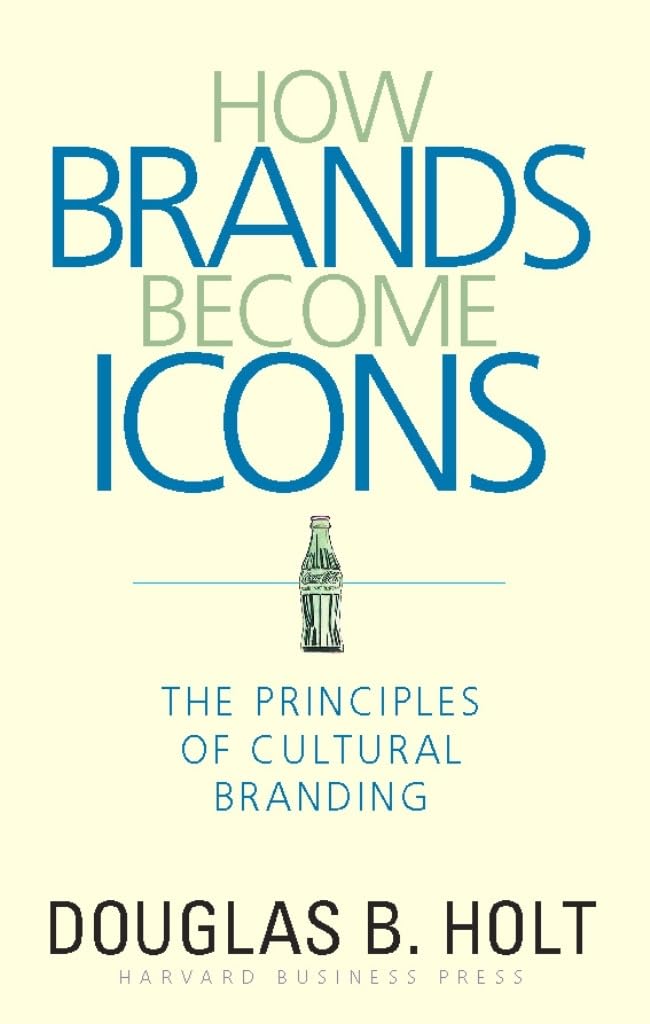


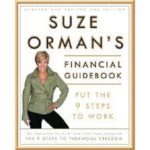
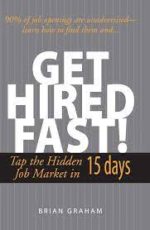
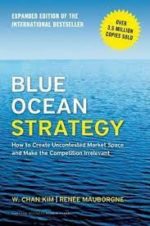


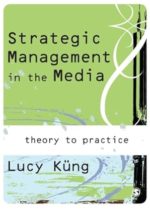
Be the first to review “How Brands Become Icons: The Principles of Cultural Branding”